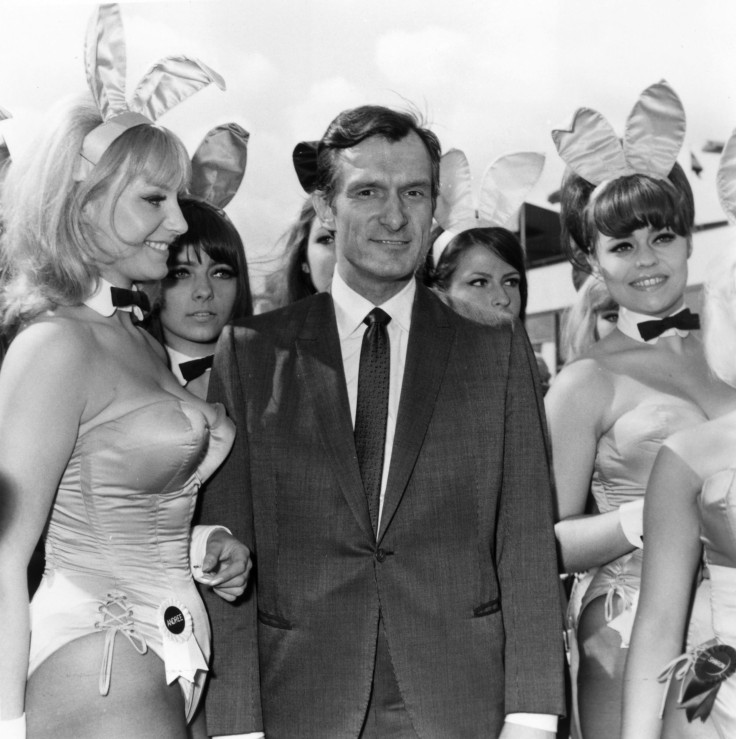Hugh Hefner Cause Of Death: Iconic Playboy Founder Dead Aged 91

Hugh Hefner, the iconic founder of Playboy magazine and publishing legend, died of natural causes at his home, the Playboy Mansion, in Los Angeles on Wednesday. He was 91, Playboy Enterprises said in a statement.
American Icon and Playboy Founder, Hugh M. Hefner passed away today. He was 91. #RIPHef pic.twitter.com/tCLa2iNXa4
— Playboy (@Playboy) September 28, 2017
“Hugh M.Hefner, the American icon who in 1953 introduced the world to Playboy magazine and built the company into one of the most recognizable American global brands in history, peacefully passed away today from natural causes at his home, The Playboy Mansion, surrounded by loved ones," a spokesman for Playboy Enterprises said.
Hefner reportedly founded the magazine with only $600 and another $1,000 that he borrowed from his mother. The first centerfold, which is an iconic feature of the monthly magazine, was that of Marilyn Monroe.
"My father lived an exceptional and impactful life as a media and cultural pioneer and a leading voice behind some of the most significant social and cultural movements of our time in advocating free speech, civil rights, and sexual freedom," Cooper Hefner, Chief Creative Officer of the Playboy Enterprises and Hugh's son, said after his father's death. Here is his full statement.
Statement from @cooperhefner on the passing of his father #HughHefner #Playboy pic.twitter.com/9di2wA4wJa
— Maryhelen Campa (@mhcampacbs) September 28, 2017
While speaking to CBS Sunday Morning's Bill Whitaker in 2010, Hefner had described the magazine saying, "We were there to ignite the flame that became the sexual revolution. I take some pride in that."
While the iconic magazine managed to both inspire and ride the "sexual revolution" during the 1960s and 70s, in the recent years, however, it has struggled due to tough competition because of free pornography extensively available online. For a brief period from mid-2016 through early 2017, the magazine also tried experimenting and avoided nudity before it finally returned to its older formula.
Born on April 9, 1926, Hefner served in the U.S. Army during World War II and then went on to work as a copywriter at a magazine, Esquire. In 1953, he decided to try his luck at making a place of his own in the publishing world. The first issue featuring Marilyn Monroe on the centerfold hit the newsstands in December 1953 and it sold over 50,000 copies, E! News reported.
The magazine landed several huge celebrities for years to come, including Cindy Crawford, Kim Basinger, Pamela Anderson, Madonna, Sharon Stone, Naomi Campbell, Carmen Electra, Drew Barrymore and Kim Kardashian.

Hefner knew that photos of nude women paid the bills but he also had certain ideas and a socially progressive philosophy that he liked to follow for his flagship magazine. Some of the greatest celebrity interviews and popular journalism pieces were also published alongside photos, like an interview with Martin Luther King Jr. and the 1974 article “The Great Shark Hunt” by journalist and author Hunter S. Thompson.
“I think that from the very beginning what made Playboy do popular was not simply the naked ladies, there were naked ladies in other magazines,” Hefner had said in an interview earlier, according to E! News.
“What made the magazine so popular was, even before I started writing the philosophy, there was a point of view in the magazine. Prior to that, you couldn’t run nude pictures without some kind of rationale that they were art. I made them into, I put them into a context of a positive, or what I perceived as a positive attitude, on male-female relationships,” he said.
Hefner married three times and is survived by his current wife Crystal Hefner, whom he married in 2012, and four children — two from his first marriage and other two from the second marriage, TMZ reported.
© Copyright IBTimes 2024. All rights reserved.












